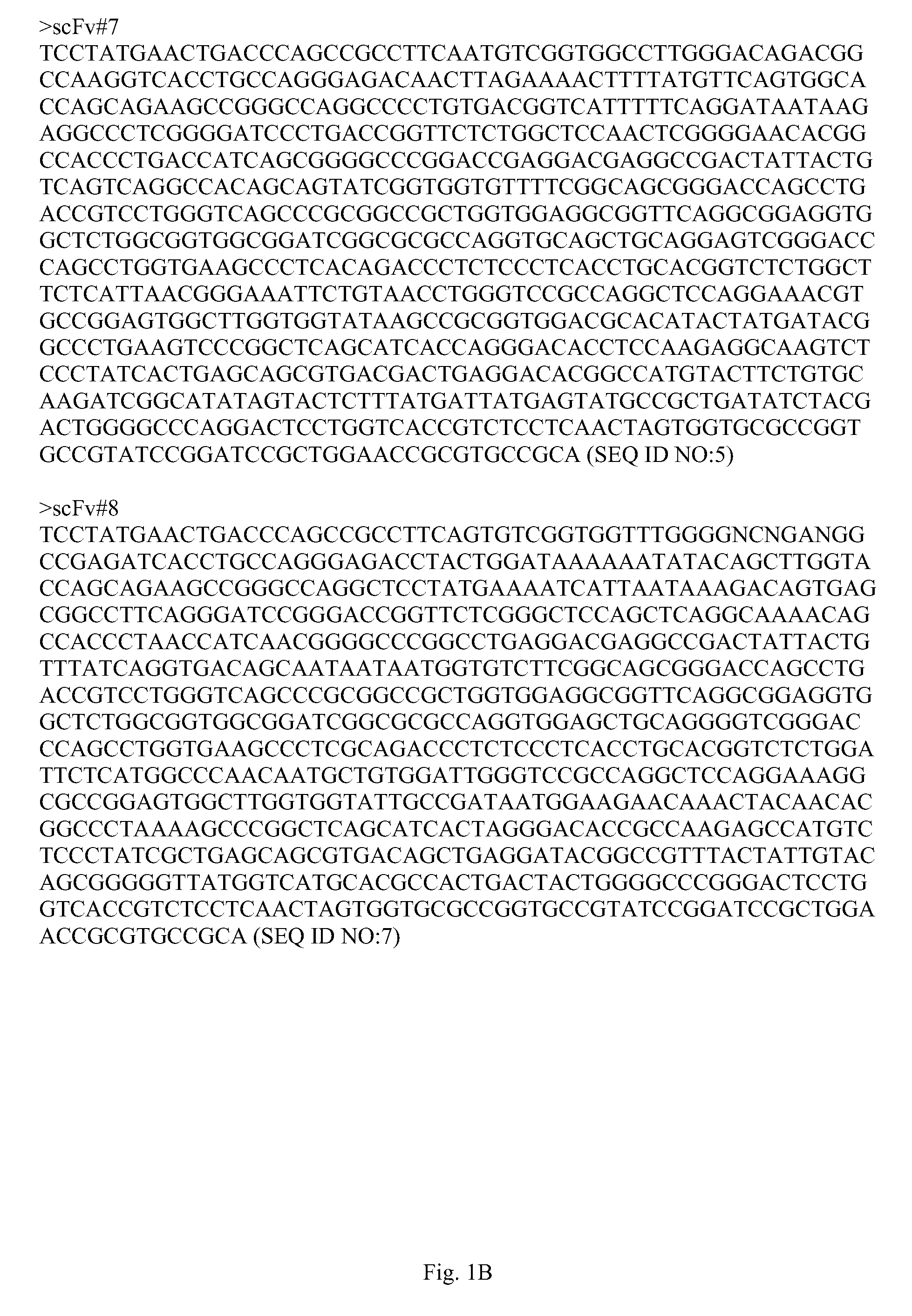Methods And Systems For Multi-Antibody Therapies
a multi-antibody, therapy technology, applied in the direction of drug compositions, peptides, tissue culture, etc., can solve the problems of difficult production and storage of antibodies for protecting large populations, difficult to produce and store enough antibodies for large populations, and difficult to achieve single antibody therapeutic agent development. achieve the effect of facilitating production and greater effectiveness
- Summary
- Abstract
- Description
- Claims
- Application Information
AI Technical Summary
Benefits of technology
Problems solved by technology
Method used
Image
Examples
example 1
[0088]The concept is to improve therapies that involve multiple monoclonal antibodies (mAbs) by using small recombinant peptide, protein or polynucleotide agents that have the same binding specificity as the mAbs. Each of the recombinant binding agents is produced containing the same epitopic tag. A single mAb that recognizes the epitopic tag is co-administered to patients with the binding agents. The different agents bind to the same targets as the multiple mAbs and the anti-tag mAb binds to these agents through the epitopic tag. This permits delivery of the same therapeutic effect that is achieved with multiple mAb therapy, but requires only a single mAb. If desired, mAbs of different isotypes, or polyclonal anti-tag antibodies, could be used therapeutically to deliver different immune effector activities.
[0089]A number of small recombinant protein agents were generated. They were called single-chain Fvs (scFvs) and recognize botulinum neurotoxin serotype A (BoNT / A). These scFvs a...
example 2
BoNT / A VHH / Nanobody Binding Agents
[0099]VHH binding agents were identified, produced and purified that were specific to botulinum neurotoxin serotype A (BoNT / A) or serotype B (BoNT / B). All VHHs that were made have nine amino acids at the amino coding end that are determined by the forward PCR primer sequence. See FIGS. 3A-3C for the sequences. These sequences derive from ‘framework 1’ and can vary slightly from the original coding sequence. The most common sequence of these amino acids is QVQLVESGG (SEQ ID NO: 16) and this sequence is used for FIGS. 3A-C.
[0100]At the carboxyl coding end of all VHHs is either the short hinge sequence, AHHSEDPS (SEQ ID NO: 17), or the long hinge sequence, EPKTPKPQ (SEQ ID NO: 18). One or the other of these sequences are present in the VHHs sequence shown in FIGS. 3A-3C, and these appear interchangeable without loss of function. We know this because identical clones have been identified from alpacas that vary only in the hinge sequence and both retain ...
PUM
| Property | Measurement | Unit |
|---|---|---|
| Mass | aaaaa | aaaaa |
| Mass | aaaaa | aaaaa |
| Mass | aaaaa | aaaaa |
Abstract
Description
Claims
Application Information
 Login to View More
Login to View More - R&D
- Intellectual Property
- Life Sciences
- Materials
- Tech Scout
- Unparalleled Data Quality
- Higher Quality Content
- 60% Fewer Hallucinations
Browse by: Latest US Patents, China's latest patents, Technical Efficacy Thesaurus, Application Domain, Technology Topic, Popular Technical Reports.
© 2025 PatSnap. All rights reserved.Legal|Privacy policy|Modern Slavery Act Transparency Statement|Sitemap|About US| Contact US: help@patsnap.com



